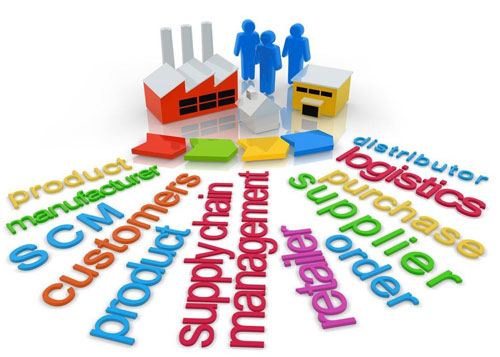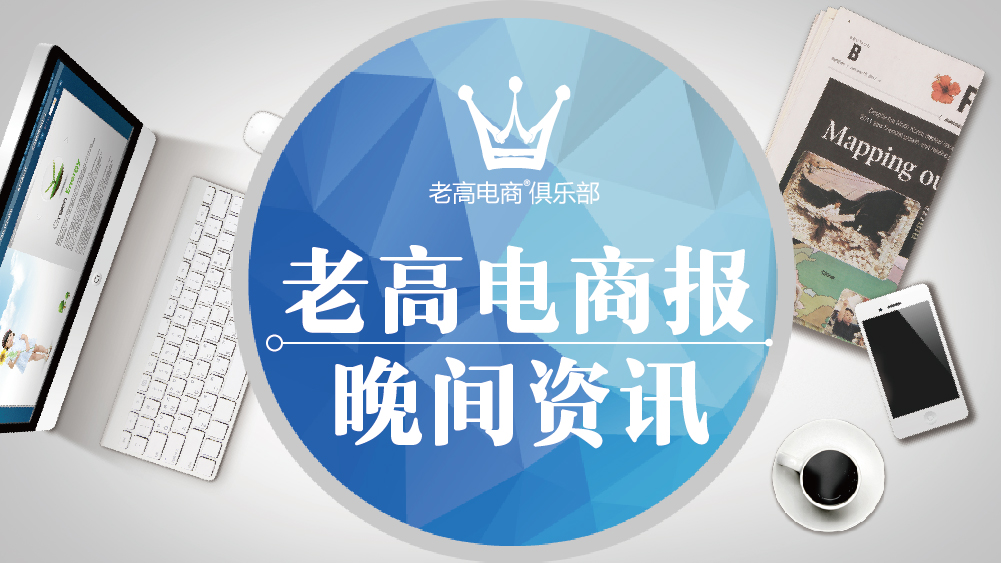Haier CEO Zhang Ruimin said: "It's not simple, it's just doing simple things that are done thousands of times; it's not easy, it's just doing easy things that are done right thousands of times."
What supply chain management needs to do is such a simple and not simple thing.
In the late 1990s, Huawei introduced IBM's integrated supply chain process, so it quickly achieved a leap from tens of billions to tens of billions of dollars. In the past decade, after Huawei entered the mobile terminal industry, the challenges of departmental collaboration and supply chain collaboration have become greater, so it began to re-examine the end-to-end process and further optimize supply chain management.

In a mature industry, whoever can control complexity better and whoever can do a good job in supply chain management will be more likely to survive.
If a company can achieve a punctual, high-quality and low-cost supply chain management is qualified.
In China, since the concept of supply chain management was introduced late, many people do not have an accurate understanding of supply chain management. Some people simply understand it as software such as SRM (supplier management) CRM (customer relationship management); some people think it is procurement and supplier management, and they are only responsible for ensuring the provision of products and services; some people think that supply chain management is just an extension of production management or simply logistics management.
In fact, supply chain management is a larger concept, and "only focusing on the local area and not the overall situation" is an important reason for the inefficient supply chain management. To understand supply chain management, we must start from the global perspective: supply chain management is to integrate the product flow, information flow, and capital flow from suppliers to customers, do a good job in procurement management, operation management, and logistics management, solve the complexity of products, organizations, and processes, and achieve greater customer value and lower supply chain costs.
Below I will help you analyze what supply chain management is like from both vertical and horizontal dimensions.
Vertical understanding of supply chain
Vertically, supply chain management includes procurement/supply management (source search), production and operation management (processing), and logistics management (payment). The supply chain involves the entire process of product from scratch.
Procurement Management
Procurement management mainly refers to ensuring that resources are acquired with quality and quantity at the right cost by analyzing expenses, confirming demand, evaluating suppliers, selecting suppliers, signing agreements, and managing suppliers. From the perspective of supply chain management, procurement is at the integration point of the company's internal and external, and manages internal needs (such as new product search for design, mass production needs of the production department), and external management of suppliers (such as supplier selection and performance management).
Every dollar saved by purchasing will increase profit by one yuan. As many industries turn to outsourcing strategies, the status of procurement is increasing. Some companies have begun to count the contributions of procurement management. For example, net profit is 10%, of which 0.5% is achieved by purchasing management by reducing procurement costs, etc.
operations management
Microsoft's "Incart" defines operational management as: "Operational management is the management of major commercial activities, that is, organizing and controlling the most basic business activities, and providing products and services to customers." To be more precise, operational management is the integration of functions such as design, industrial engineering, management information systems, quality management, production management, inventory management, accounting, etc. to effectively plan, utilize and control production or service institutions. Operation management is actually a value-added process of converting raw materials, manpower, technology, funds, equipment, etc. into products and services, and is a production and processing process.
Operations and management are all small matters about food, food, food, food, food, food, food, food, food, food, food, food, food, food, food, food, food, food, food, food, food, food, food, food, food, food, food, food, food, food, food, food, food, food, food, food, food, food, food, food, food, food, food, food, food, food, food, food, food, food, food, food, food, food, food, food, food, food, food Just as McDonald's French fries are nothing great, what's really awesome is that anywhere in the world, fries fried by employees of different skin colors at different times are the same flavor.
Logistics Management
Logistics management is part of supply chain management, that is, to meet customer needs, promote the effective flow and storage of products, services and information from the origin to the consumption point through planning, implementation and control. In short, it is to move the product from point A to point B and process the service and information during the process.
The objects of logistics management include transportation, fleet, warehousing, material processing, order fulfillment, logistics network design, inventory management, supply and demand planning, and management of third-party logistics service providers. Logistics management not only includes the positive flow of products, services, and information (from suppliers to customers), but also manages its reverse flow (from customers to suppliers). In the era of consumption upgrading, returns, warranty and remediation are increasingly valued.
Many people think that logistics management is simple, but as long as you know that logistics accounts for 10% of the GDP of the United States/Japan and 20% of China, you will know how difficult it is.
In general, procurement management focuses on supplier management, making suppliers an organic extension of the company; operation management strives to complete the value-added process of products and services in the most effective way; while logistics management strives to flow goods from their origin to their consumption points in the most economical and rapid way. They form the entire chain of the supply chain.
Horizontal understanding of supply chain
From a horizontal perspective, supply chain management involves product flow, information flow, and capital flow. Taking Apple's iPhone 8 as an example, in the production process, Foxconn produces Apple and is Apple's first-tier supplier; TSMC supplies chips to Foxconn, and is Foxconn's first-tier supplier and Apple's second-tier supplier. In terms of sales, Apple is the supplier, supplying it to telecommunications companies; telecommunications companies further supplying it to their own storefront stores; and then the iPhone 8 is in the hands of consumers.
In the above supply chain, products flow from suppliers to customers, funds flow in the opposite direction, and information flows in two directions. Supply chain management is actually an integrated management of product flow, information flow, and capital flow.
Product flow
Product flow is the physical flow of products, involving procurement, production, warehousing, transportation, etc., with the purpose of purchasing, manufacturing, transportation, and selling products with high efficiency and low cost. Taking a mother and baby physical store as an example, where to choose a supplier, where to set up a first- and second-level distribution center, and where to open a store, you must consider the comprehensive costs of production, warehousing, transportation and sales. The reason why the supply chain exists is because of product flow.
The well-known challenge of product flow is actually not production, transportation or warehousing, but the transparency of the supply chain , that is, in the supply chain, the specific link and how many products are, to put it bluntly, it is still an issue of information flow.
Information flow
Information flow is the nervous system of the supply chain, which governs the operation of product flow and capital flow. For example, inaccurate quantity, error in the item number, inappropriate packaging, error in labeling, and not attached to the quality inspection certificate. The surface is a physical problem, but in fact it is an information problem.
There are two major problems with information flow: distortion and inefficiency in information transmission, and artificial barriers. The former is a small problem that can be solved by relying on information technology, while the latter is a major reason for the inefficiency of the supply chain. For business reasons, companies, departments, and people are not willing to share information. For example, suppliers are worried that the purchaser will use the production information they provide to reduce prices or disclose it to suppliers' competitors.
How to ensure the accuracy of the data and extract the appropriate information from it is an important task for managers.
Fund flow
Fund flow is the blood of the company and the supply chain. Just imagine, if a company does not have the funds to pay the supplier’s payment for goods, pay employees’ wages, and pay water, electricity and gas fees, how long can the company last? Many times, information problems are linked to inventory problems, and inventory problems lead to capital flow problems. For example, in the "bullwhip effect", demand forecast information is distorted and amplified when transmitted along the supply chain, resulting in overproduction, overexpansion, and inventory backlog of the entire supply chain, resulting in serious backlog of funds. Fund flow problems often depend on the solution to the information flow.
In general, product flow is the foundation of the supply chain. The flow from suppliers to customers is the physical logistics of the supply chain; the flow of capital is the blood of the supply chain, flowing from customers to suppliers; and the flow of information is two-way circulation, forming the nervous system of the supply chain. Supply chain management is the integrated management of product flow, information flow and capital flow. Supply chain management, like any management, is not a simple choice, but a balanced approach. To understand supply chain management, we must view product flow, information flow and capital flow from the overall supply chain.
The key to supply chain management
To survive, enterprises not only need to develop good products and sell them at a good price, but also produce them at an appropriate cost and speed. Especially in the era of globalization where circulation costs and communication costs are getting cheaper, more and more companies tend to abandon vertical integration and outsourcing non-core businesses in order to achieve lower cost and higher efficiency. As the main source of cost reduction and efficiency improvement, supply chain management is increasingly valued, and integrated management has become the key to supply chain management.
Integrated supply chains must solve two problems: relationships and connections. Relationship solves the problem of whether you are willing to do it, focusing on the partner level (the company is in the company, department and department, employees and employees); connection solves the problem of whether it can effectively cooperate, focusing on the order level, that is, whether the product flow, information flow and capital flow around the order are smooth.
The so-called integrated management of the supply chain is to avoid local optimization from the perspective of the supply chain, focus on the overall situation, optimize the product flow, information flow, and capital flow of the supply chain, so that the total cost of the supply chain is lower, faster, and has a higher service level, thereby improving the level of competition in the supply chain and winning in the competition between chains.
(To be continued)
Thank you for your attention and support to Laogao E-commerce Club . Please indicate the source of the reprinting website www.shxuanming.net
Click to register to apply to join the well-known e-commerce network - Laogao E-commerce Club. Any merchants from all over the country, Tmall merchants, Taobao Crown Store, Jinguan Store, and other e-commerce platform merchants can apply to join!





![#Laogao E-commerce Newsletter# [October 14 E-commerce Morning Newsletter]](/update/1628739713l952665637.jpg)

 EN
EN CN
CN
